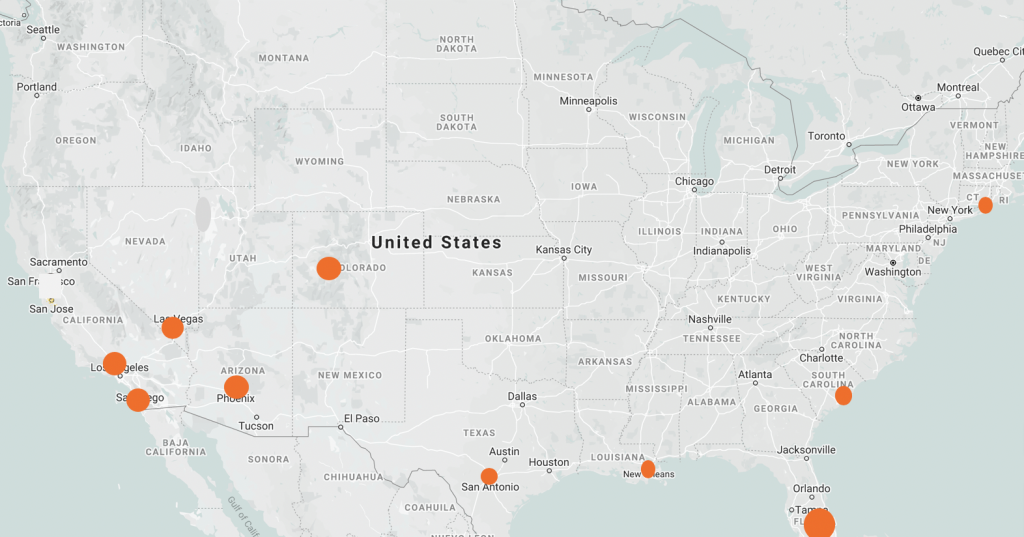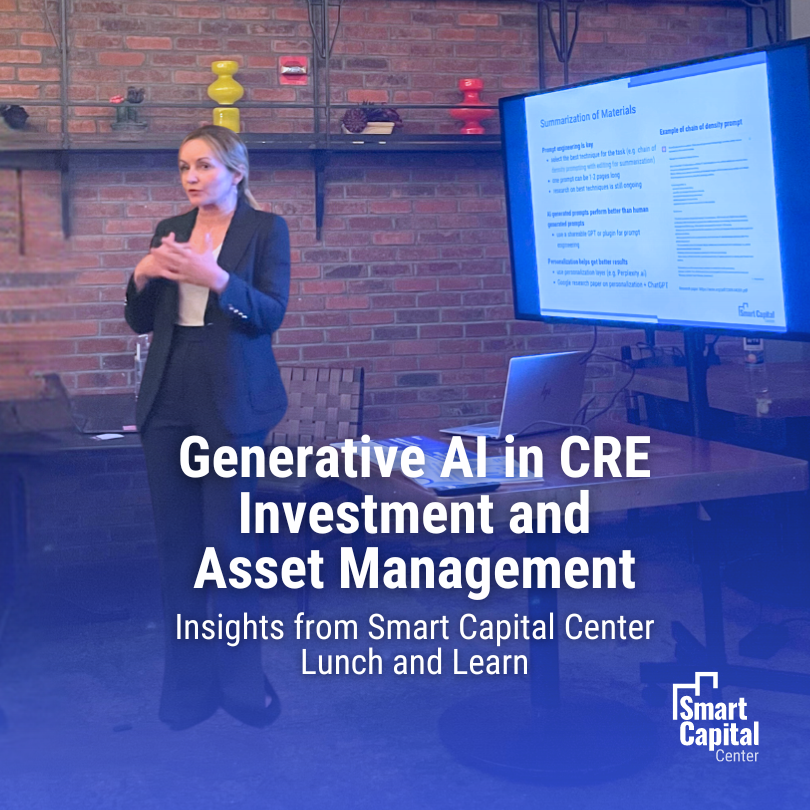Where are the best opportunities for savvy multi-family investors to invest post COVID-19?
It may be a little too early to ascertain the full impact of COVID-19 on the US real estate market when compared with other health related events such as SARS or H1N1, or even the financial meltdown in 2009. Yet, one thing is clear: history repeatedly shows that financial and property markets do recover from…

It may be a little too early to ascertain the full impact of COVID-19 on the US real estate market when compared with other health related events such as SARS or H1N1, or even the financial meltdown in 2009.
Yet, one thing is clear: history repeatedly shows that financial and property markets do recover from such events. It’s just a question of time.
For savvy real estate investors, therefore, several key questions arise:
- How will property markets react in the short and medium term with regard to the valuations of commercial real estate and of multi-family properties; and
- When the dust finally settles, where and in which real estate markets are the best opportunities likely to be to find astute investments?
The real estate market: an overview
Obviously, the real estate market countrywide is not homogenous. In fact, by its very nature, the property market is fragmented and comprises a series of sub-markets—distinct by district, town, city and state and so on.
Yes, of course, the performance of the macro economy in the US does affect overall sentiment, prices and values, but local conditions are more likely to drive changes in prices, cap rates and investment yields.
Then, as we consider micro factors, there are a variety of asset classes with different investment features and different occupier characteristics to consider. Local supply, demand and even planning regulations all contribute to what happens to property values in any particular location.
So, as fears about the COVID-19 pandemic recede, we can’t simply say that the all sectors of the US real estate market will be affected uniformly. There will be markets which come through virtually unscathed, given the robust health of the overall US economy pre-COVID. And there will be markets which, owing to their occupier or primary user characteristics, will suffer disproportionately—and offer interesting investment opportunities.
Which market sectors will be most affected?
Until the pandemic and associated fear factor subsides, people are going to have to avoid busy or crowded public places where large groups get together. Indeed, it was the recreational and entertainment sectors which first saw the cancellations and postponements of large gatherings of people.
Accordingly, the most obvious impact of the virus will be on the entertainment, recreation and leisure sectors. It may be some time before places or activities such as restaurants, bars, night clubs; hotels and spas; cinemas, sports events (participation and spectating), casinos, shopping malls, and travelling, are all deemed safe enough to revisit or undertake. And, even if they are deemed safe, getting people comfortable enough to frequent venues again will be a major challenge for the marketing gurus!
As you’d expect, there will be a spillover effect related to the above on the residential market in locations with high levels of retail, tourism, transport, leisure and entertainment exposure. It’s likely that both single and multi-family homes, particularly catering to people who work in the aforementioned sectors, will be affected.
Which specific real estate markets are more exposed to these sectors?
Major entertainment and leisure destinations such as Las Vegas with some 270,000 people involved in the restaurant/hotel services sector (around 32% of the work force) are obviously going to be hard hit. But there are others: Atlantic City with 37,000 workers, 35% of the workforce; Myrtle Beach 32,000 (30% of the work force); Maui (Hawaii) 22,400 (35% of the work force).
Gilpin County in Colorado has a phenomenal 87% of its workforce in arts, recreation, tourism and hotels/accommodation, albeit the total workforce is relatively small at just over 4,350. For further reference, also in Colorado, Aspen and Breckenridge have around 40% of the work force affected. We expect the Covid-related slowdown to hit Colorado particularly hard.
Miami and Key West also have a significant share of workforce in the affected industries. 25% of Miami residents work in hotel, retail and entertainment sectors. Key West has over 40% of its residents employed by these industries.
New Orleans has over 17% of its residents employed by restaurants alone.
Key resort destinations such as Smoky Mountain in Tennessee (Sevier County), Alabama’s (Baldwin County), South Carolina’s (Beaufort County), and Mississippi (Harrison County) beaches, and Orlando parks are some of the other markets with similarly high percentage of risk exposure (ranging from 24-57%) and will be significantly affected.
Which markets and sectors are least exposed?
On the other hand, property markets with more diverse economies are likely to see less of an impact on real estate values. For example, NYC has many restaurants and service businesses, but it also a variety of other industries. As a result, the 200,000+ restaurant and hotel workers in Manhattan make up only 9% of the total workforce.
Another key factor with New York, Los Angeles and San Francisco, for example, is that, once economic recovery starts, national and foreign investors are expected to quickly resurrect their interest in these well-liked real estate markets.
Tech focused hubs such as the San Francisco Bay Area, Austin TX, Durham, NC are also likely to be less exposed. Plus, agricultural areas such as Madera, California and Yakima, Washington where markets are far more domestic demand driven, less touristy, and less subject to seasonal demand variance.
Of all the assets classes, multi-family homes should stand out for investors
Before we take a look at some of the more compelling reasons as to why investment in the multi-family home sector, particularly in those more exposed locations where prices are likely to see the greatest drops, will be attractive, two important points need to be highlighted:
- Just a relatively short time ago (think two months), prior to the outbreak, the overall US economy was reported as being in robust health;
- Despite the impact of the virus, there are still forecasts for economic growth in the second half of this year already, albeit reduced—but not for economic contraction.
Some overriding reasoning for investment into multi-family homes, therefore:
- When equity and currency markets struggle or are overly volatile, there is invariably a flight of capital to residential real estate. It’s always considered better to invest in “bricks and mortar” or tangible assets rather that stocks and shares whose value fluctuations may be dramatic and where prices may take a longer time to recover;
- In times of crisis or strife, the Federal Reserve aims to keeps ample liquidity in the monetary system. In turn, this leads to extremely low interest rates and enables investors easier (and cheaper) access to loans for the acquisition of multi-family properties;
- In the more exposed residential markets, some multi-family block owners are highly leveraged at what now may look to be relatively unattractive interest rates. With values dropping and financing repayments due, they may need to sell their assets at discounted prices;
- As prices begin to drop and capitalization rates in, say Las Vegas, soften dramatically, obviously, investment yields or annual returns on investment will improve as long as rental demand stays stable or increases.
The result: lower valuations of multi-family homes in the most exposed markets will offer higher investment returns, plus potential for future capital appreciation.
But why will investing in multi-family homes be more attractive when compared with other property market sectors?
Well, apart from the reasons mentioned above, in short, demand from occupiers for such properties is expected to be maintained at a steady pace or, more likely, increase due to underlying demographic trends.
Occupier demand for multi-family homes will be supported in the following ways:
- Some home owners involved in the entertainment, recreational and leisure sectors may lose their jobs or be required to accept reduced salaries. As a consequence, they may not be able to keep up with their mortgage or loan repayments and have to sell their existing properties, becoming renters for at least the short-term;
- Current renters from the sector who, perhaps, rent single family homes or higher end condos will move down the rental ladder into smaller apartments to save on expenses;
- Affordability of home owning remains a challenge for many first-time buyers such as “millennials”. From 2008 to 2018, National Census data shows that median home sales prices across the US rose 31.6%, yet average income rose only 5.7%. In some fast-growing markets such as Denver or Orlando, prices have risen even more, thereby keeping many potential new homes owners from entering the buy market, but keeping demand strong in the rental sector;
- “Baby boomers” (the “silver tsunami”). National Census data shows that people over 55 represented the largest increase in numbers renting in the decade following the financial crisis (2007–2017). The figure grew by 38%, whereas in the 65-plus age group the growth was even greater at 65%. Many of this generation wish to get away from the traditional cities and live (rent) in a more relaxed, resort based living environment.
The conclusion?
Falling prices and strong underlying demand for multi-family homes make investment into this sector an attractive proposition.
Yes, it takes a high degree of real estate experience and some fortitude but, over the coming months, savvy investors should start keeping a lookout for good deals, especially in the property markets highlighted as most exposed
In any event, it’s always wise to be cautious and analyze data and markets thoroughly and in sufficient detail. Smart Capital Center, which is a free data platform where you can arrange for a detailed valuation of a property, can help in this regard. In addition, Smart Capital Center can help investors obtain financing quotes for commercial property loans from a pre-selected network of 1,000+ lenders
These may be unprecedented times, but for any astute real estate investor it’s just a question of time as to where and when to invest!
Discover how Smart Capital Center
- Drives speed
- Enhances insights
- Cut costs
Across full investment and Financing lifecycle



